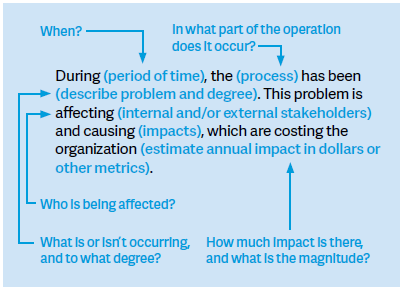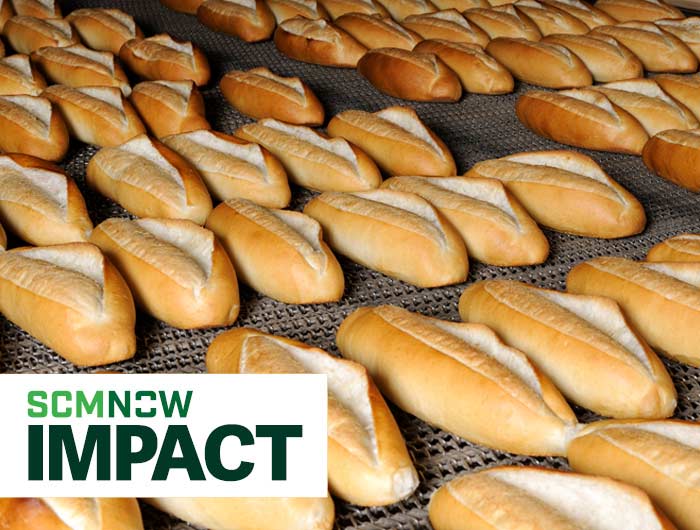Kaizen is a Japanese word that translates to “change for the good.” The APICS Dictionary defines a kaizen event as the “implementation arm of a lean manufacturing program” and notes that events typically are carried out in one week. In other words, it’s all about action. Kaizen events are natural outgrowths of gemba walks (see "Operational Excellence," July-September 2018) and one of the most powerful ways to operationalize process-improvement training and create momentum in an organization. Following are typical kaizen events to consider at your organization.
Waste kaizens are intended to eliminate or reduce waste in a process or organization. Waste is any activity that does not add value in the eyes of the customer. Shigeo Shingo identified seven wastes: overproduction, waiting, transportation, stocks, motion, defects and processing. Recently, an eighth was identified: failing to use your people to their fullest potential. A handy way to remember these eight wastes is with the acronym DOWNTIME, as in
- defects
- overproduction
- waiting
- nonutilized talent
- transportation
- inventory
- motion
- excess processing.
Error-proofing kaizens can eliminate mistakes by reducing handoffs, combining steps, adding checklists, creating standard work, implementing poka-yokes (mistake-proof techniques) and using in-process quality checks.
Lead time kaizens use value-stream analysis to help reduce the lead time associated with delivering a product or service. This can be accomplished by eliminating handoffs, combining steps, positioning materials and supplies closer to operators, striving for one-piece flow, and using kanban.
Visual-management kaizens are designed to improve the flow of activities, materials and information through visual-management techniques. Examples include metric boards, color-coding, Andon lights, safety tape on floors, kanban and the five Ss.
How to conduct a kaizen event
Phase 1: Preparation. The most critical stage of any kaizen event is the preparation. Yet properly defining the problem, goal and scope can be very challenging. Try this simple but effective approach. First, team leaders should ask the following:
- What is the purpose of the event?
- What process or value stream will be targeted?
- What are the desired outcomes?
- Who should be on the team?
Answering these questions helps ensure planning and scoping are done properly, goals and objectives are realistically determined, and the right people participate.
Next, create a problem statement. Answer these questions to define the problem:
- What is or isn’t occurring, and to what degree?
- Where in the process or product does it occur?
- Who does the problem affect?
- When did it occur, and has it occurred before?
- How much impact is there, and what is the magnitude in terms of frequency, cost, time and customer satisfaction?
Following is a problem statement template that has been diagrammed to highlight these questions. Notice that there isn’t a “why” or anything about what actions will be taken.
Next, consider the goal statement, which should address the issue in the problem statement. It quantifies the expected performance improvement and identifies the timing. A goal statement doesn’t mention the cause of the problem; nor does it say what actions will be taken. Remember to make your goal statement SMART — specific, measureable, achievable, relevant and timely. Here is a template:

The next phase involves clarifying the project’s boundaries. (See sidebar.) The scope should delineate where the project starts and ends and identify what it includes and excludes. A typical scope statement would sound something like this:

Phase 2: Training. Equipping team members with appropriate process-improvement training is necessary to ensure success. Don’t assume that everyone has the same, or a correct, understanding of lean and six sigma principles and methods. Consider incorporating training on a just-in-time basis during the event. Basic topics to be covered include
- lean and six sigma principles, methods, tools and goals
- current- and future-state mapping
- root-cause analysis frameworks and tools.
Phase 3: Implementation. Most kaizen events begin with mapping the current state and then validating what you have documented by going to the gemba. Try breaking up the group into two or three teams and have them map out the current process as they know it. Compare the maps. This will expose process variations and generate unique perspectives. Another option is to begin by defining the future or ideal state requirements and capabilities. Often, this approach enables a team to reinvent a more robust process versus incrementally improving the existing one.
Next, conduct a gap analysis to identify holes in the process, redundancies, waste, defects and bottlenecks. Quantify waste and defects in terms of annual volume; time delays; and cost associated with rework, scrap and expediting. This makes it possible to prioritize issues. Then, have the team conduct route-cause analysis. This should be a disciplined process that uses real data and involves asking why without finger pointing. When the root causes have been determined, design the future state. Consider how the process should flow, the number of steps and specific improvements.
Given the bias for action during a kaizen event, people should be thinking about how to rapidly test the solutions in the workplace. It doesn’t have to be perfect at this point; just be directionally correct. This may require drafting an initial standard work process, creating a starter checklist, placing simple visual labels on bins or pallets, repositioning materials or tools, implementing a basic kanban system, or reducing batch sizes. Be sure to measure the process before the test. Then, implement and observe the changes. Document improvements in terms of quality, productivity, time, cost, safety or customer satisfaction.
Phase 4. Follow-up: After the kaizen event, quickly review the desired changes. The facilitator should prepare a summary readout and distribute it to the team. Be prepared to capture real-time results on key-performance indicators and display them on a metric board at the process or work station. Storyboarding the event through photos and deliverables is an effective way to communicate with the people involved, as well as the rest of the organization. Finally, conduct follow-up meetings with team members and anyone else who was affected to determine the success of the kaizen event and identify any improvements for the future.





